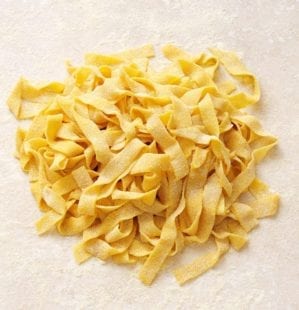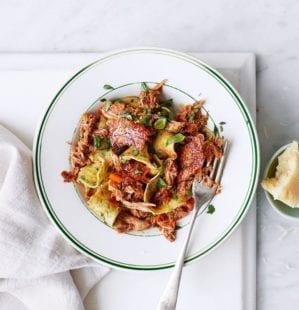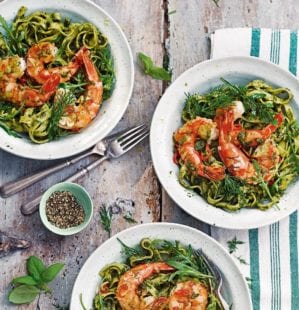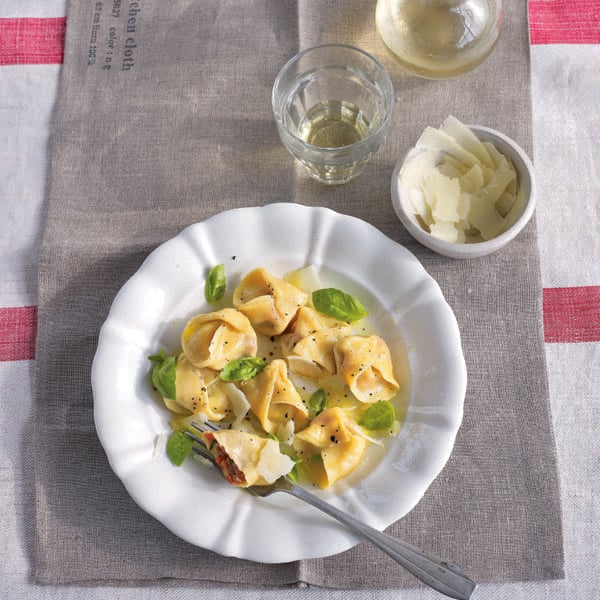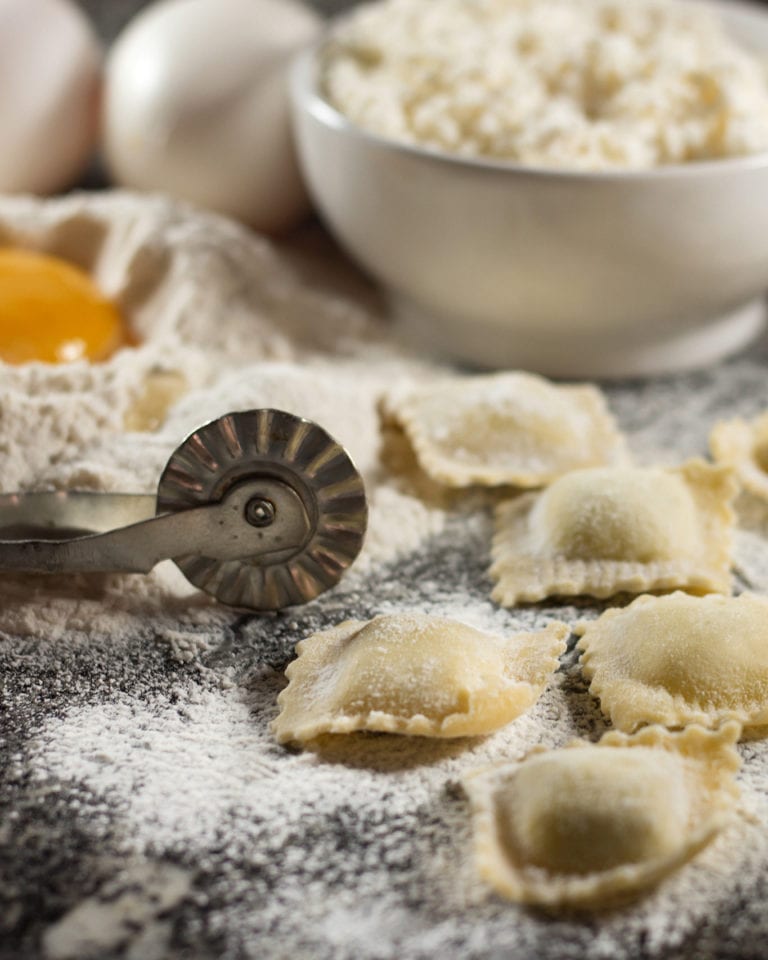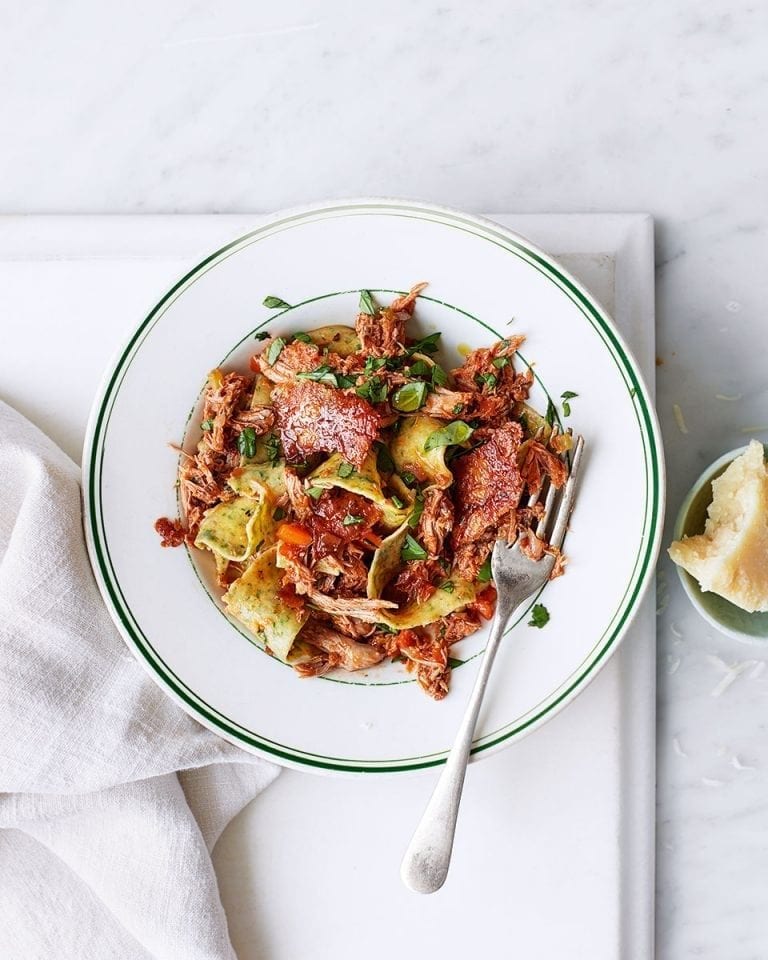Fresh pasta dough: the 7 things you need to know
Making your own fresh egg pasta is rewarding, but there are a few key rules you need to know.
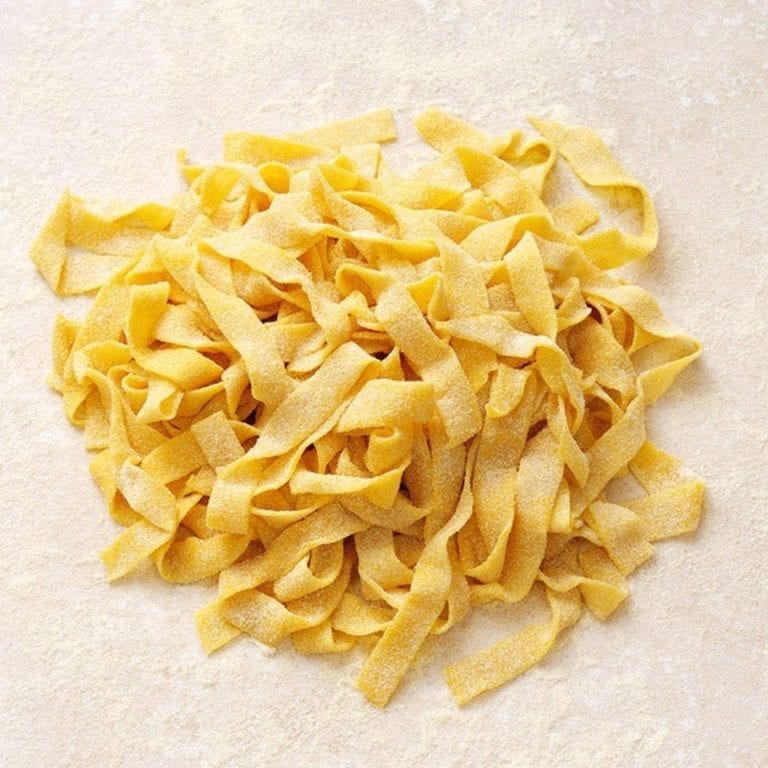
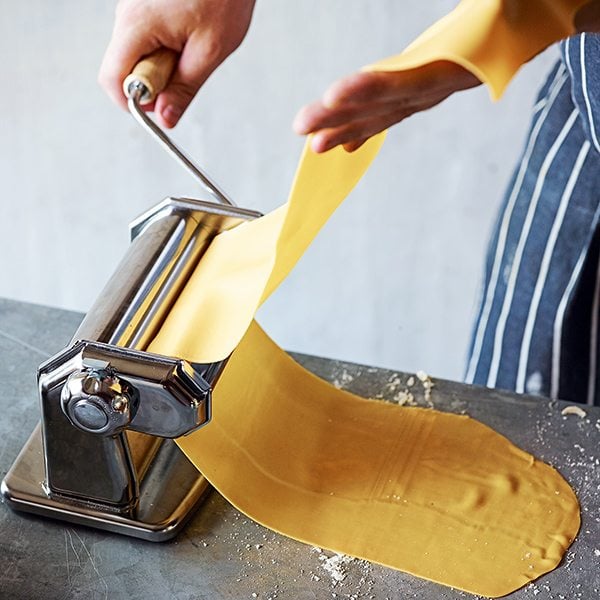
1. Equipment
You only need a worktop, a rolling pin, a sharp knife and lots of elbow grease. A food processor and a pasta roller will make life easier, particularly if you’re making thin sheets for ravioli and other filled pasta.
2. Flour
Look for Italian ‘00’ (doppio zero) flour. The number indicates that the flour has been finely milled, but brands vary. Choose one specifically milled for pasta and check the protein content: it should be 10-12 per cent. When the flour is kneaded with moisture (from the eggs), the protein forms strands of gluten that give the pasta its structure and strength.
3. Eggs
As well as providing water for the gluten, eggs also give fat, which enriches the dough, giving it a smooth, silky finish. Most medium eggs weigh 55-65g and, as a rule, the whites are 90 per cent water and 10 per cent protein, while the yolks are 48 per cent water, 17 per cent protein, 33 per cent fat and two per cent carbohydrate.
4. The perfect ratio
The ratio of white and yolk in your pasta will give different results. The more egg white, the more pliable the dough; the more yolk, the richer the pasta will be. There are endless variations, but for a dough that works every time use: 1 whole egg plus 2 yolks for every 150g of flour. Don’t add salt: let the salted cooking water and sauce do the seasoning.
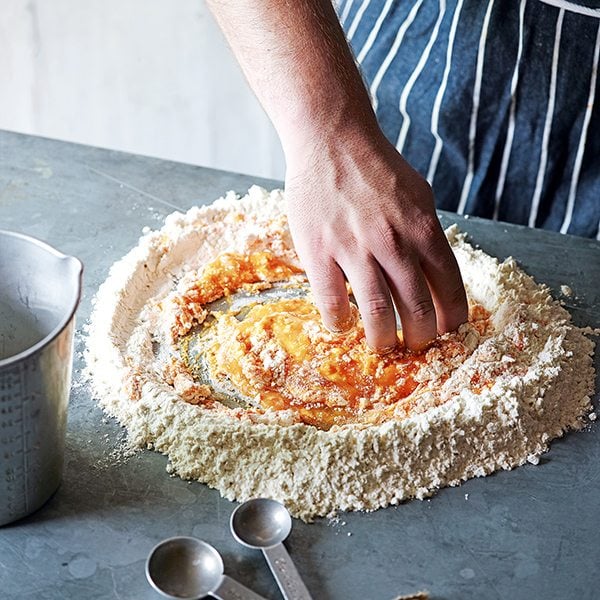
5. Mixing and kneading
Put the flour, egg and yolks in a food processor and mix using a blade attachment until a rough dough forms. Tip out onto a work surface and knead by hand for about five minutes. The finished dough should be smooth and regular with the texture of modelling clay – not too wet and not too dry. If in doubt, err on the sticky side – you can always dust the dough with flour, but you can’t add extra water.
6. Resting the dough
Wrap in cling film and chill for at least 4 hours before rolling. During this time the water will be absorbed by the flour and the gluten strands will relax, giving a strong, pliable, roll-able dough. The higher the yolk content, the more it needs to rest. Pasta made only with yolks needs to rest for 6 hours.
7. Rolling the dough
Flour the worktop and roll the pasta out as thin as you like using a rolling pin. Or, if you have a pasta machine, flour the rollers, then feed a piece of dough through the widest setting – let it come through naturally, don’t pull it. Fold the pasta in half, then feed it through again. Do this 2-3 times. Reduce the width setting and pass the pasta through twice (no need to fold), reduce the setting again and pass it through twice, then set the width setting to the thinnest and pass it through once. It’s now ready to be cut and filled or shaped. Dust the pasta shapes lightly with flour to stop them sticking together.
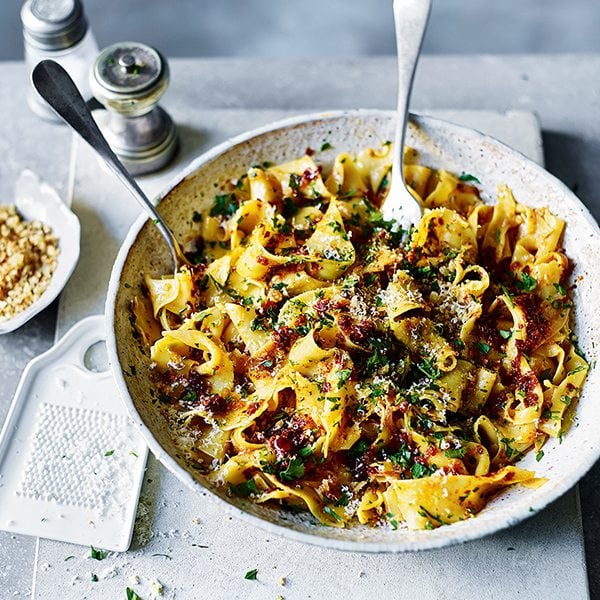
See our video here for how to roll pasta in a pasta machine.
John is the author of several cookery manuals and has appeared on BBC’s Saturday Kitchen and MasterChef. Find out more about John, and his restaurant, The Woodspeen.
Subscribe to our magazine
Food stories, skills and tested recipes, straight to your door... Enjoy 5 issues for just £5 with our special introductory offer.
Subscribe
Unleash your inner chef
Looking for inspiration? Receive the latest recipes with our newsletter
